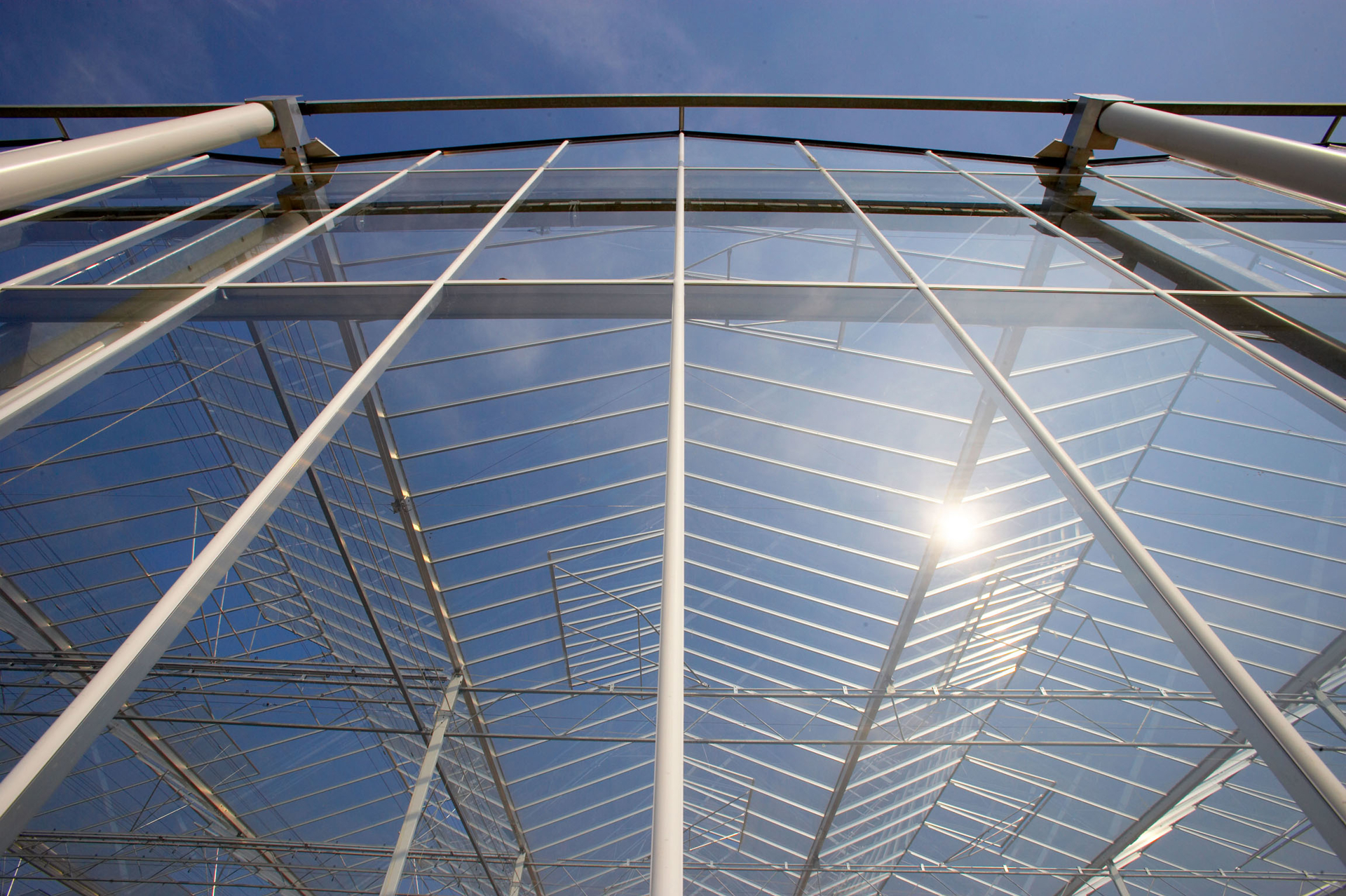When it comes to greenhouse production, every detail matters. A key rule in greenhouse cultivation states that 1% more light equals 1% more crop production. That’s why choosing the right greenhouse construction glass is essential. At DutchGreenhouses®, we provide high-quality solutions tailored to maximize sunlight entry and optimize plant growth in both commercial glass greenhouses and smaller structures.
Greenhouse Glass

Glass For Greenhouse
Do you want to know more about greenhouse glass?
Do you want to know more about greenhouse glass?
FAQ
Greenhouse glass can be categorized into two glass types: non-tempered glass and tempered glass. These can be low-iron for more light translucency, or just as regular float glass. For safety reasons, non-tempered glass can only be used in side-walls. Tempered glass gives options for diffuse glass and AR-coating possibilities, to compensate for the loss of light due to diffusion.
The special property of diffuse glass to scatter light, ensures a more uniform distribution of sunlight across the plants, reducing shadows and hotspots. More even light distribution allows for better photosynthesis, which can enhance plant growth and productivity. Additionally, diffuse glass can help in reducing stress on plants caused by direct sunlight, making it particularly useful in regions or seasons with high light intensity. Overall, the use of diffuse glass contributes to higher yields and better quality crops.
Although diffuse glass has many benefits, the disadvantages also need to be considered:
- Costs (tempered diffuse glass is more expensive than regular tempered glass)
- Loss of light (AR coatings can compensate the loss of light transmission, but add onto the costs of the diffuse glass)
- Loss of flexibility (tempered diffuse glass will limit the flexibility in switching crops, reselling and anticipation between seasons)
The Haze-factor is the level of light diffusion, quantified into an index number. The Haze-factor equals the percentage of light that is scattered above an angle of 2,5 degrees.






